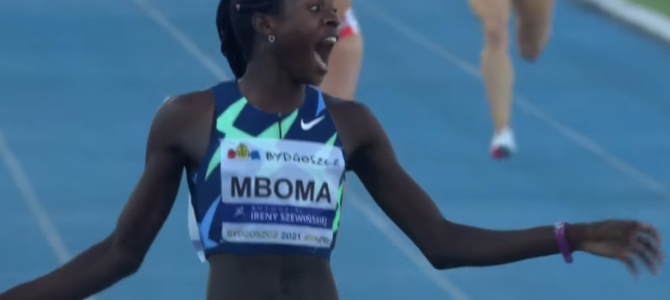
The persistent narrative of the transgender industry says sex is an arbitrary feature assigned at birth and unassigned at will. The limitations of biology, they insist, can be medically overcome to match whatever sex you feel like.
Surgery, or hormone blockers, are how to “change” and “redefine” your sex in this paradigm. Men can be women and women can be men, because there’s nothing inherent about a person’s sex.
As a result, when men want to compete in women’s sports, the politicized response is to allow them, so long as they meet certain requirements like lowered testosterone levels. Such rules allowed Laurel Hubbard, a New Zealand man who qualified for women’s weightlifting in the Tokyo Olympics, to compete. Forbes explains the current rules for testosterone levels:
In 2015, the [International Olympic Committee] ruled that transgender athletes who identify as female could compete on female teams if their testosterone levels were below ten nanomoles per liter for at least 12 months before the competition. In 2019, World Athletics lowered the maximum level to five nanomoles per liter. By comparison, most cisgender female athletes have testosterone levels between 0.12 and 1.79 nanomoles per liter.
Testosterone limitations for athletics have also been used to prevent athletes from taking performance-enhancing hormones, of course. Yet their use in allowing men to compete as women implicitly but clearly states: the differences between men and women’s biology can be corrected by (i.e., reduced to) things like hormone levels.
Except, of course, they can’t. And the treatment of Namibian runners Christine Mboma and Beatrice Masilingi proves why.
Mboma and Masilingi, both 18, were born women, have female biology, and recognize themselves as women. Yet, because they both have naturally high levels of testosterone, the International Olympic Committee (IOC) doesn’t recognize them as women for the purpose of certain events.
Although the women said they never had reason to believe their hormone levels were abnormal, tests required by World Athletics (the international governing body recognized by the IOC) found their natural testosterone levels higher than previously established limits. Mboma and Masilingi were given an ultimatum: take testosterone reducers, or be disqualified from the women’s 400m race.
“I would ruin the way my body develops because that’ll be something that rearranges everything,” Masilingi said of artificially reducing her testosterone levels. “I wouldn’t want to involve any other things because this is the way my body functions in its normal way.”
After being forced out of the 400m, their event of choice, Mboma and Masilingi competed in the 200m in Tokyo, and Mboma ended up winning silver. Her breakout success in an event that wasn’t her primary one leaves us to wonder: what could she have done if allowed to compete in the 400m?
Instead, we have a system in which men can be women if they take enough hormone blockers, but women who have not messed with their natural hormone levels are told they cannot qualify as women. Such is the stunted logic of our modern view of sex, taken to its batty conclusion.
It’s worth acknowledging that some of the convoluted Olympic rules on testosterone levels in women’s sports revolve around athletes like Caster Semenya. Semenya is a South African runner who appears to have the genuine condition of being intersex — born female but with certain male features and male levels of testosterone. Medical instances of sex development disorders are rare, but do create real and complicated questions of fairness in settings like athletic categories.
After Semenya came onto the world stage in 2009, the International Association of Athletics Federations (now World Athletics) established rules for women with conditions like hers in 2011. However, the institution didn’t stop there. It also established new guidance that would allow men to compete as women, provided they show proof of sex “reassignment” surgery and undergo testing for levels of hormones like testosterone.
There’s much debate over whether the current system strikes the right balance between fairness to Semenya and fairness to her competitors. But regardless, even if some athletic testosterone limits for women’s sports were created out of genuine attempts to address conditions like Semenya’s, they have been expanded and used to allow men to unfairly compete as women.
As a result, women like Christine Mboma and Beatrice Masilingi are penalized and disqualified from women’s sporting events for their authentic biology, while men like Laurel Hubbard are allowed to get into women’s competitions by tampering with their biology.
Are Mboma and Masilingi less “female” than Hubbard? Of course not. But reducing sex to something that can be manipulated and determined by hormone therapy leads to that ridiculous conclusion. You either have to admit that taking testosterone blockers doesn’t really make a man into a woman, or you have to say that Hubbard is more of a woman than Mboma and Masilingi are.
IOC President Thomas Bach said in a press conference last month that the rules for athlete testosterone levels may be changing soon into “guidelines” because “there is no one-size-fits-all solution.” Such is the complicated bed the IOC has made for itself. It would be encouraging to see the new guidelines protect women’s biology and opportunities better than the current ones, but the recent trajectory suggests they will only get worse.









